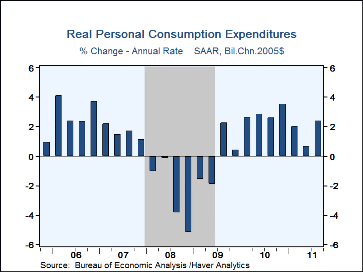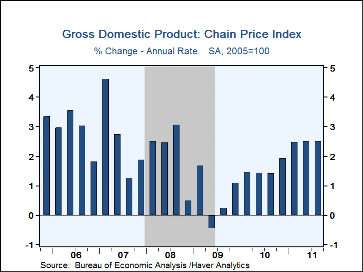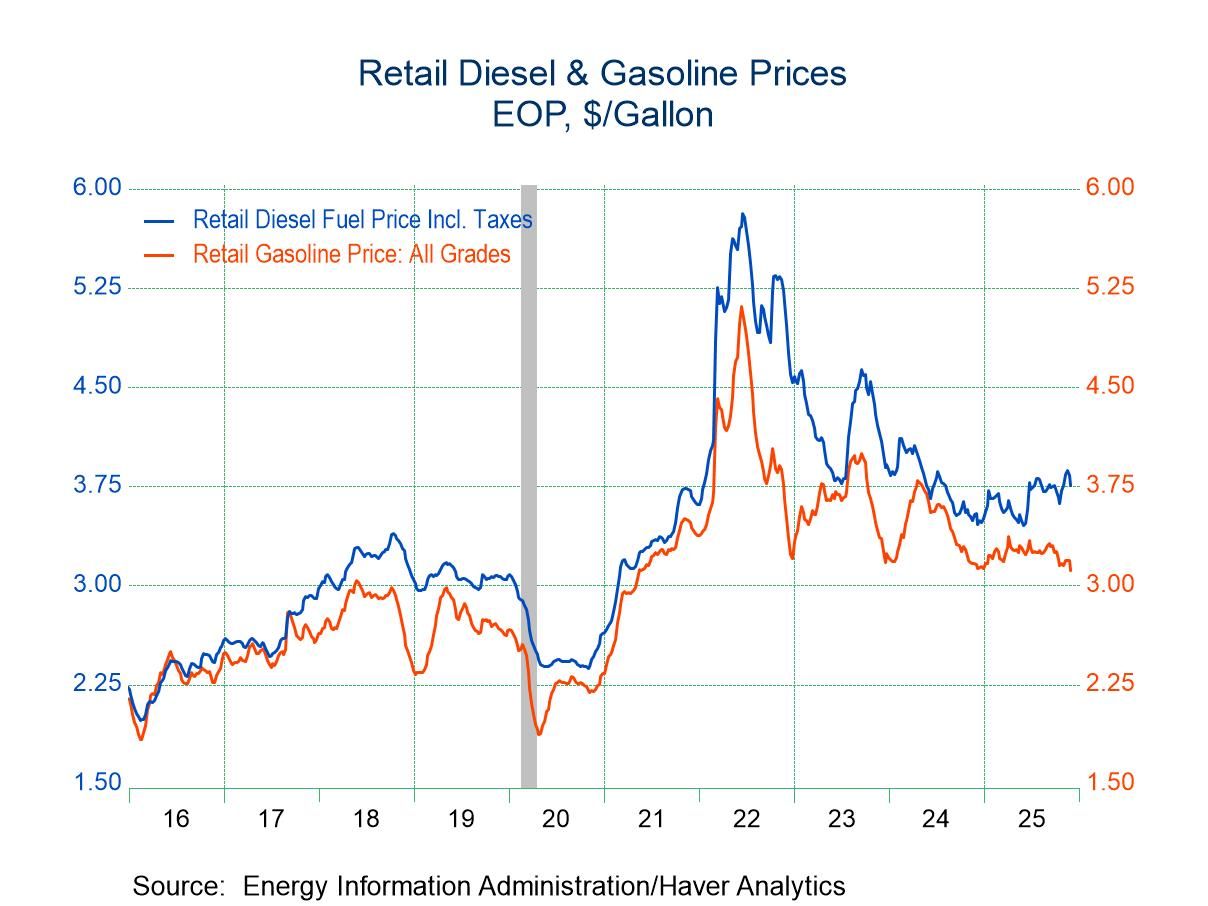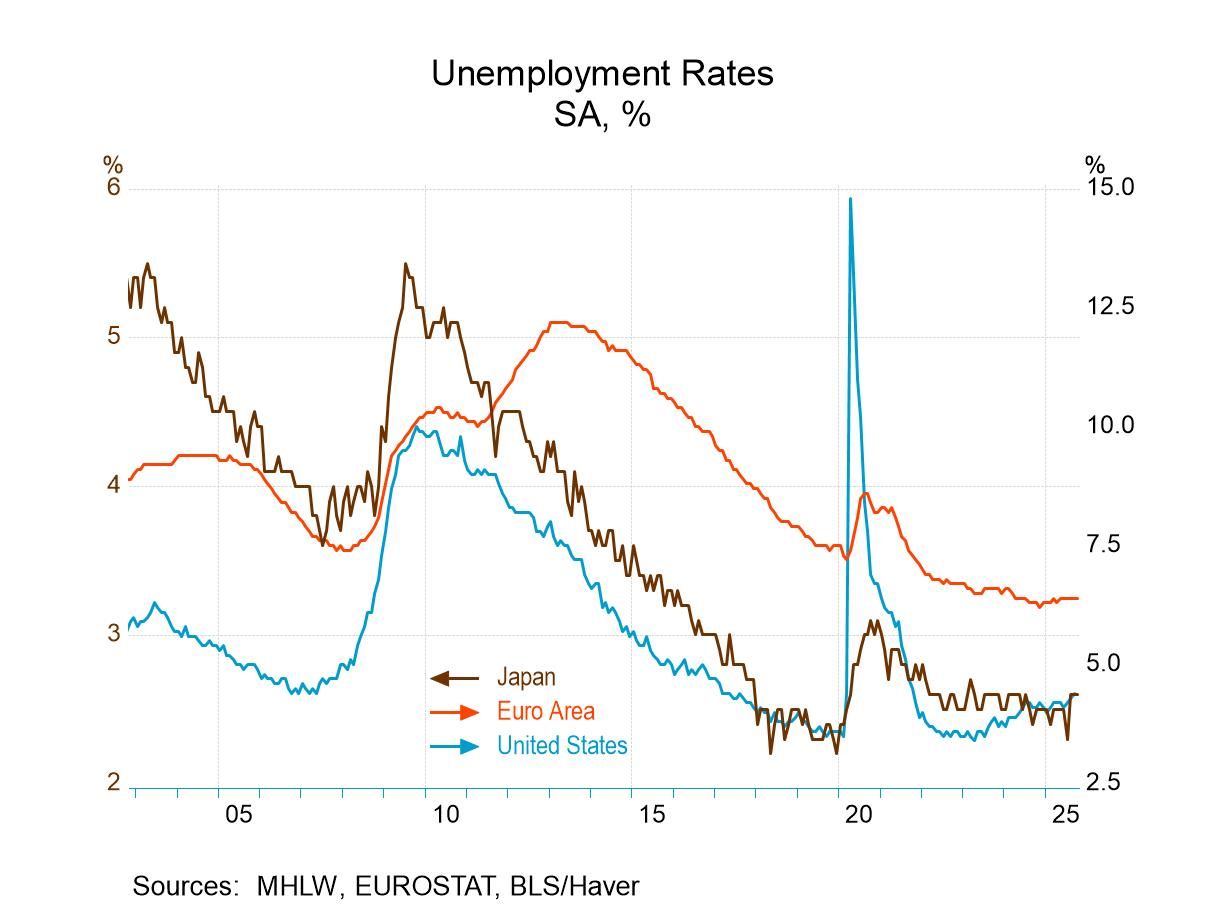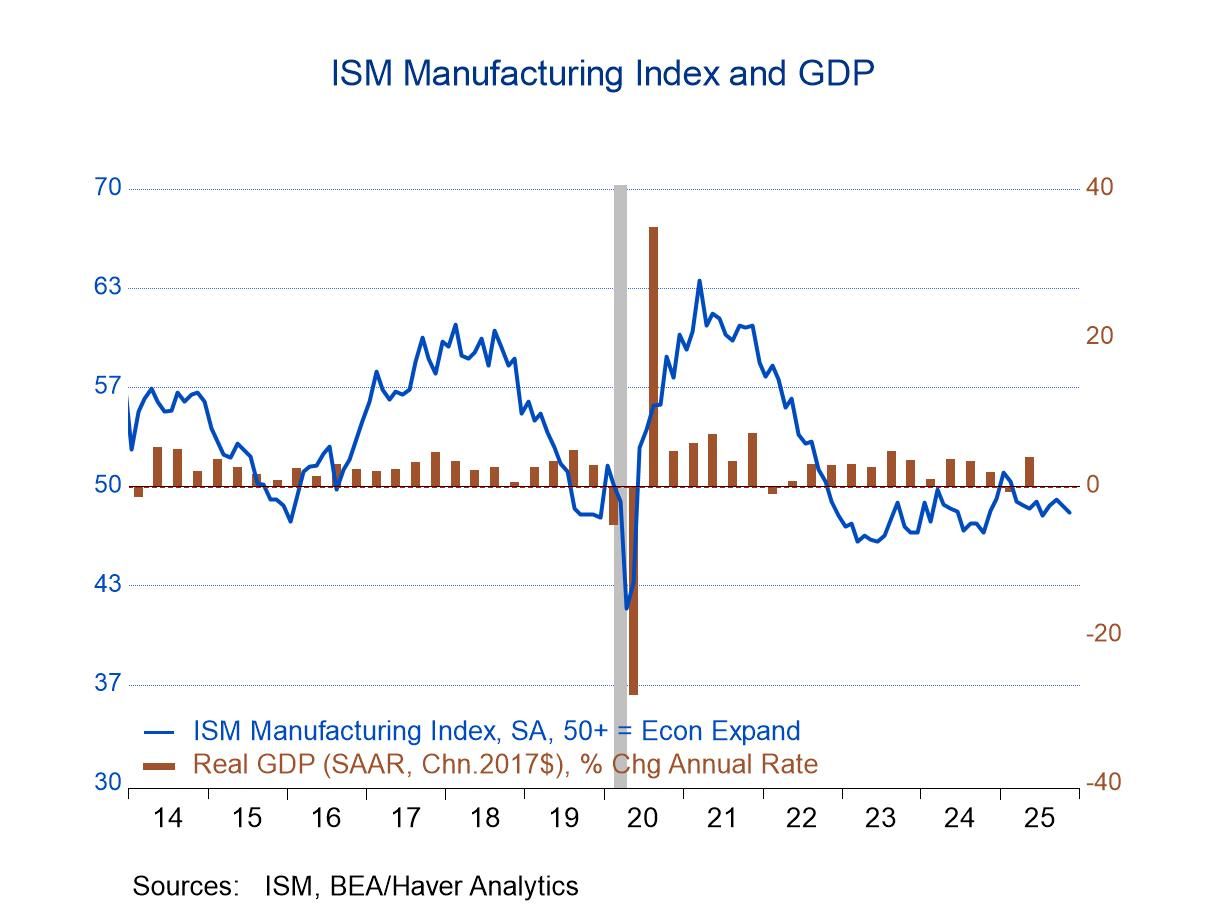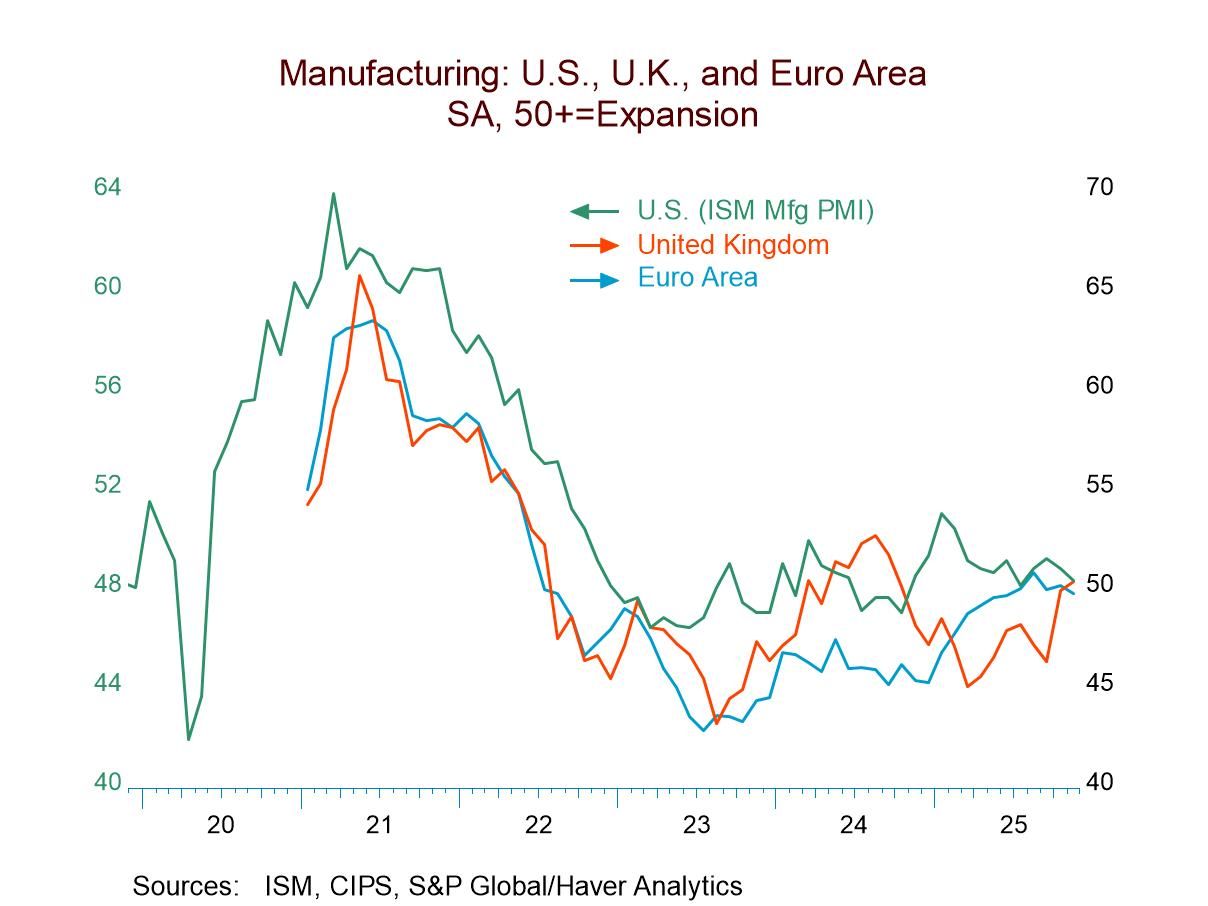 Global| Oct 27 2011
Global| Oct 27 2011U.S. GDP Growth Improves With Strong Personal Consumption And Business Investment
by:Tom Moeller
|in:Economy in Brief
Summary
The U.S. economy is not yet on the firmest of footings, but its earlier slowdown eased last quarter.Real GDP grew at a 2.5% annual rate in Q3. The latest was the firmest growth in four quarters and it matched Consensus expectations. [...]
The U.S. economy is not yet on the firmest of footings, but its earlier slowdown eased last quarter.Real GDP grew at a 2.5% annual rate in Q3. The latest was the firmest growth in four quarters and it matched Consensus expectations. Earlier figures were unrevised. Leading the improvement was strong growth in business investment and improvement in personal consumption.
Overall domestic final demand grew at an improved 3.2% rate (1.9% y/y), its greatest since Q2'10. That was led by a 16.3% jump (9.2% y/y) in business fixed investment, its strongest in five quarters. Personal consumption growth also improved to 2.4% (2.2% y/y) which was boosted by firmer growth in home furnishings & other durables (5.0% y/y) as well as services (1.7% y/y). Also, government spending did not decline as it had during the prior three quarters. Residential investment growth eased to 2.4% (1.6% y/y), but at least it wasn't negative.
This demand improvement was offset by the running down of inventories. A 1.1 percentage point subtraction from GDP's advance was the largest since Q4 of last year. Unchanged was the influence of the foreign trade sector at +0.2 percentage points. Exports rose at a 4.0% rate (5.8% y/y) and imports rose at a 1.9% rate (2.3% y/y).
Price inflation was unchanged as the chain price index held at a 2.5% rate of increase. Nevertheless, this rate of growth is double that in 2010. Growth in the PCE deflator eased to 2.4% (2.9% y/y)
The latest GDP figures can be found in Haver's USECON and USNA databases; USNA contains basically all of the Bureau of Economic Analysis' detail on the national accounts, including the new integrated economics accounts and the recently added GDP data for U.S. Territories. The Consensus estimates can be found in AS1REPNA.
| Chained 2005 $, % AR | Q3'11 | Q2'11 | Q1'11 | Q3'11 Y/Y |
2010 | 2009 | 2008 |
|---|---|---|---|---|---|---|---|
| Gross Domestic Product | 2.5 | 1.3 | 0.4 | 1.6 | 3.0 | -3.5 | -0.3 |
| Inventory Effect | -1.1 | -0.3 | 0.3 | -0.8 | 1.6 | -0.8 | -0.5 |
| Final Sales | 3.6 | 1.6 | 0.0 | 2.4 | 1.4 | -2.6 | 0.2 |
| Foreign Trade Effect | 0.2 | 0.2 | -0.3 | 0.5 | -0.4 | 1.0 | 1.2 |
| Domestic Final Sales | 3.2 | 1.3 | 0.4 | 1.9 | 1.8 | -3.6 | -1.0 |
| Demand Components | |||||||
| Personal Consumption | 2.4 | 0.7 | 2.1 | 2.2 | 2.0 | -1.9 | -0.6 |
| Business Fixed Investment | 16.3 | 10.3 | 2.1 | 9.2 | 4.4 | -17.9 | -0.8 |
| Residential Investment | 2.4 | 4.2 | -2.4 | 1.6 | -4.3 | -22.2 | -23.9 |
| Government Spending | 0.0 | -0.9 | -5.9 | -2.4 | 0.7 | 1.7 | 2.6 |
| Chain-Type Price Index | |||||||
| GDP | 2.5 | 2.5 | 2.5 | 2.4 | 1.2 | 1.1 | 2.2 |
| Final Sales of Domestic Product | 2.6 | 2.5 | 2.4 | 2.3 | 1.2 | 1.0 | 2.2 |
| Final Sales to Domestic Purchasers | 2.0 | 3.4 | 3.9 | 2.8 | 1.5 | -0.1 | 3.3 |
Tom Moeller
AuthorMore in Author Profile »Prior to joining Haver Analytics in 2000, Mr. Moeller worked as the Economist at Chancellor Capital Management from 1985 to 1999. There, he developed comprehensive economic forecasts and interpreted economic data for equity and fixed income portfolio managers. Also at Chancellor, Mr. Moeller worked as an equity analyst and was responsible for researching and rating companies in the economically sensitive automobile and housing industries for investment in Chancellor’s equity portfolio. Prior to joining Chancellor, Mr. Moeller was an Economist at Citibank from 1979 to 1984. He also analyzed pricing behavior in the metals industry for the Council on Wage and Price Stability in Washington, D.C. In 1999, Mr. Moeller received the award for most accurate forecast from the Forecasters' Club of New York. From 1990 to 1992 he was President of the New York Association for Business Economists. Mr. Moeller earned an M.B.A. in Finance from Fordham University, where he graduated in 1987. He holds a Bachelor of Arts in Economics from George Washington University.



